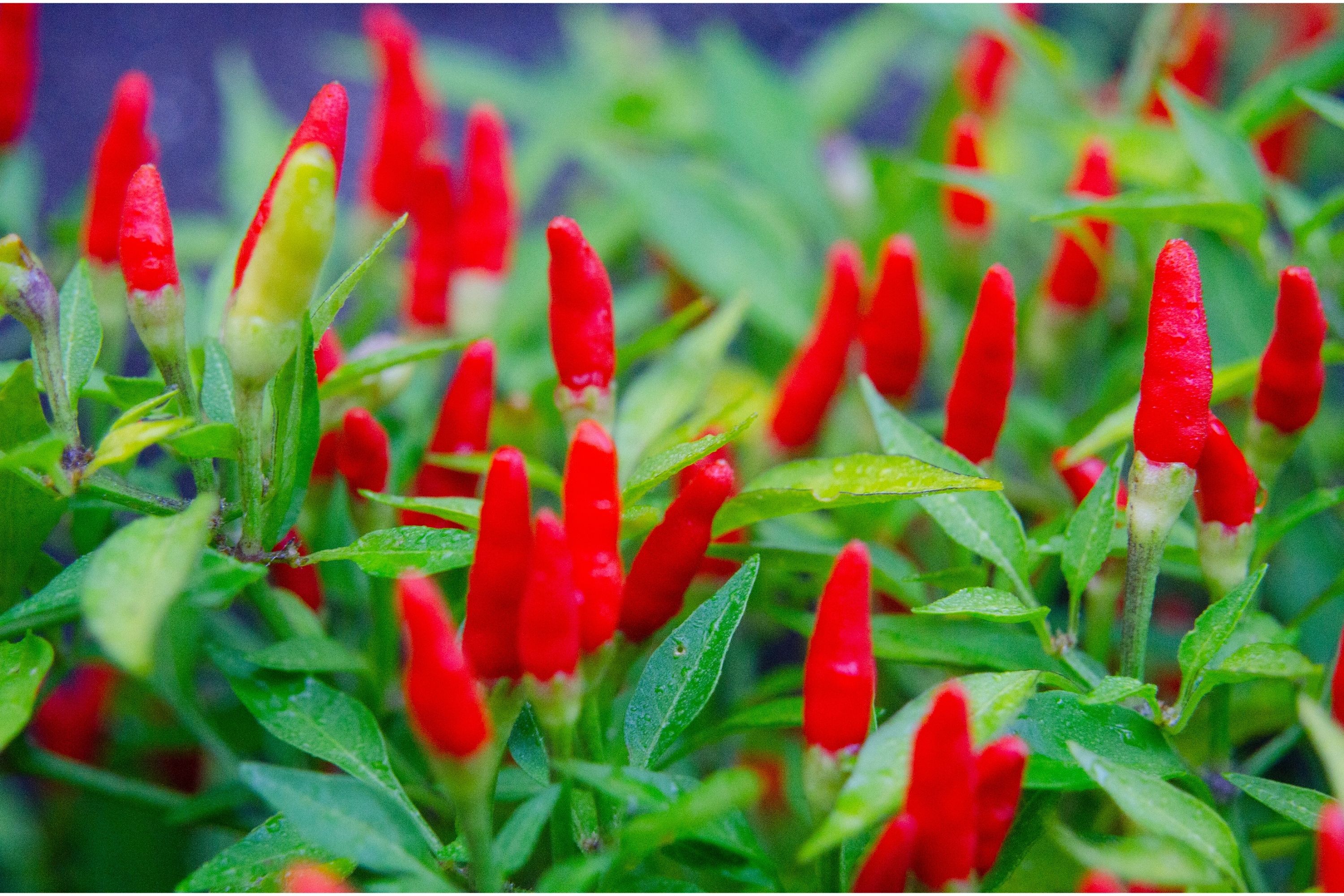Chili pepper
(Capsicum frutescens)

Description
Capsicum frutescens, commonly known as the chili pepper or bird pepper, is a species of the genus Capsicum in the Solanaceae family. It is a small and shrubby perennial plant native to South America but widely cultivated across the world for its spicy fruits, which are commonly used in cooking and for medicinal purposes. Taxonomy The species Capsicum frutescens belongs to the genus Capsicum, which is a part of the Solanaceae family, commonly known as the nightshade family. The genus Capsicum includes several other species, including Capsicum annuum, Capsicum chinense, and Capsicum baccatum, among others. Description Capsicum frutescens is a small, bushy perennial plant that grows up to 1.5 meters tall. It has a woody stem that branches out into smaller, thin branches that produce the fruits. The leaves of the plant are ovate, dark green in color, and measure up to 5 cm in length. The flowers are small and white, with five petals and yellow anthers. The fruits of Capsicum frutescens are small, typically measuring 1 to 2 cm in length and 0.5 to 1 cm in width. They are initially green in color, but as they mature, they turn yellow, orange, or red, depending on the cultivar. The fruits contain numerous small seeds that are yellow or brown in color. Distribution and Habitat Capsicum frutescens is native to South America, particularly the tropical regions of Brazil, Peru, and Bolivia. It has been cultivated for thousands of years and is now widely distributed across the world, particularly in Asia and Africa. It is commonly grown in gardens and farms, and is also found in the wild, particularly in disturbed habitats such as roadsides, fields, and waste places. Cultivation Capsicum frutescens is a relatively easy plant to grow, and it can be grown both in the ground and in containers. The plant prefers warm temperatures and needs at least 6 hours of sunlight each day. It also requires well-drained soil that is rich in organic matter. Propagation can be done through seeds or by taking stem cuttings. Seeds can be sown in pots or trays, and the seedlings can be transplanted into the ground or larger containers once they are about 10 cm tall. Stem cuttings can be taken from the mature plant and rooted in a moist medium. The plant requires regular watering, particularly during the flowering and fruiting stages. Fertilizer can also be applied every 2 to 3 weeks during the growing season to promote healthy growth and fruit production. Uses Capsicum frutescens is primarily grown for its fruits, which are commonly used in cooking to add flavor and spice to dishes. The fruits can be dried and ground into powder, or they can be used fresh in sauces, salsas, and other dishes. The level of heat in the fruits varies depending on the cultivar, with some being mild and others extremely hot. The fruits of Capsicum frutescens are also used for medicinal purposes. They are believed to have anti-inflammatory and analgesic properties, and are used to treat various ailments such as arthritis, sore throat, and digestive problems. Conclusion Capsicum frutescens is a small but versatile plant that is widely grown for its spicy fruits. It is easy to grow and can be cultivated both in the ground and in containers. The fruits are used in cooking and for medicinal purposes, and the plant has been valued for thousands of years for its flavor and health benefits.
Taxonomic tree:







